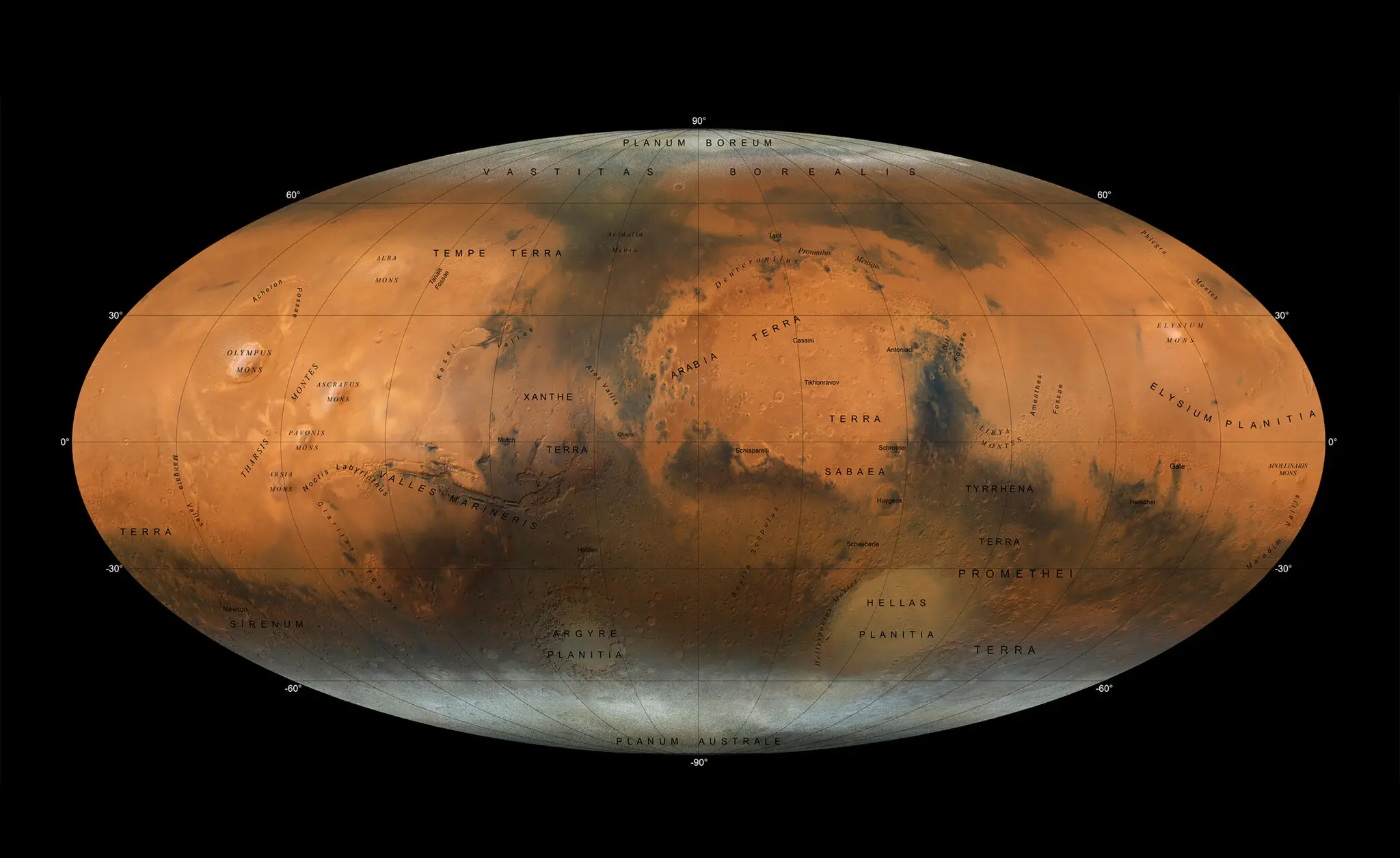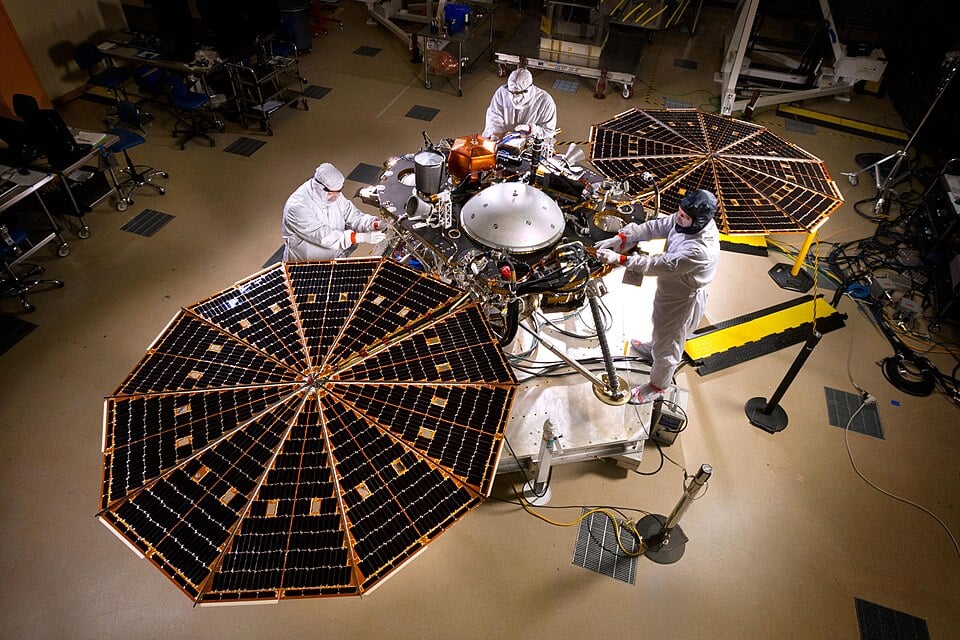Mars, the fourth planet from the Sun, has fascinated us for generations. This cold, dusty world features some of the Solar System's most dramatic landscapes, including massive canyons, towering volcanoes, and sprawling plains. While Mars appears dry and barren today, mounting evidence indicates it once had significant amounts of liquid water. Orbital imagery shows ancient riverbeds and what appear to be dried lake beds, while rovers have identified minerals that typically form in watery environments. These discoveries suggest Mars experienced a warmer, wetter period billions of years ago before transforming into the arid planet we observe today.
 A full globe image of Mars showing its many features
A full globe image of Mars showing its many features
A team of international scientists from China, Australia, and Italy investigated this very mystery; whether liquid water—crucial for habitability and once abundant on ancient Mars—still exists beneath the planet's surface. Their research addresses fundamental questions about potential Martian life and future human exploration.
"Water involves profound questions about life and humanity's future on the Red Planet" - lead researcher Dr. Hrvoje Tkalčić from the Australian National University.
The international geophysicists and geologists analysed seismic data from NASA's InSight mission, examining waveforms from two major meteorite impacts and Mars' largest recorded quake to investigate the planet's crustal structure. Their research revealed a significant low shear-wave velocity anomaly 5.4-8 kilometres beneath the surface, strongly suggesting the presence of liquid water at the base of Mars' upper crust. The team calculated this potential water reservoir could contain the equivalent of a 520-780 meter deep global water layer if spread across the entire Martian surface.
 InSight Lander in Mars-Surface Configuration (Credit : NASA/JPL-Caltech/Lockheed Martin)
InSight Lander in Mars-Surface Configuration (Credit : NASA/JPL-Caltech/Lockheed Martin)
The research team cautions that their estimate of Martian subsurface water is based only on data from beneath the InSight lander and doesn't account for regional variations or potentially primordial water elsewhere in the crust. Their groundbreaking detection of substantial liquid water 5.4-8 kilometres below the surface of Mars provides crucial insights into the planet's water cycle and habitability, though confirmation will require additional seismic missions.
This study transforms our understanding of Mars, suggesting the Red Planet didn't simply lose its water—it hid it underground. The discovery of a potentially vast subsurface reservoir challenges long-held assumptions about the evolution of Mars and dramatically improves prospects for future human exploration. With accessible water potentially available beneath the surface, establishing sustainable Martian outposts becomes more feasible.
 View of Jezero acquired byPerseverance'sleft navigation camera (Credit : NASA)
View of Jezero acquired byPerseverance'sleft navigation camera (Credit : NASA)
As space agencies plan ambitious crewed missions to Mars in coming decades, these findings will shape mission objectives, landing site selections, and resource utilisation strategies. Beyond practical implications, this research opens exciting new possibilities in astrobiology, as subsurface liquid water environments could provide sheltered habitats where Martian microorganisms might have survived or even thrived long after the surface became inhospitable.
Source :The quest for Martian water: seismic velocity anomalies suggest liquid water at depth
 Universe Today
Universe Today
